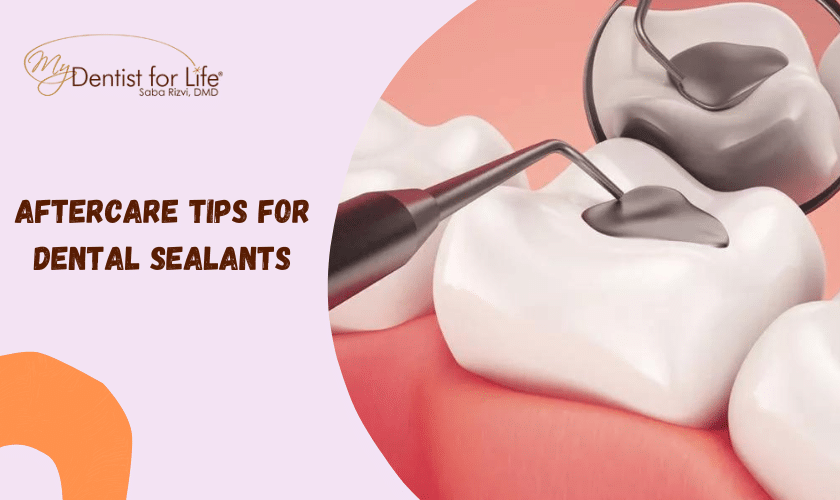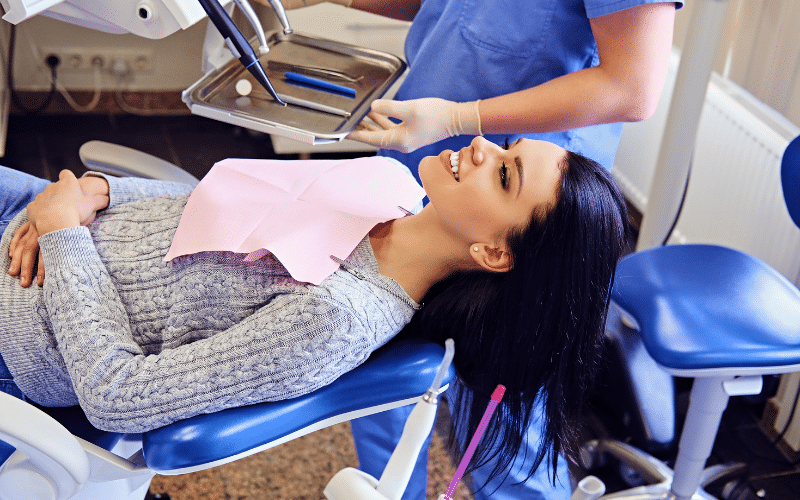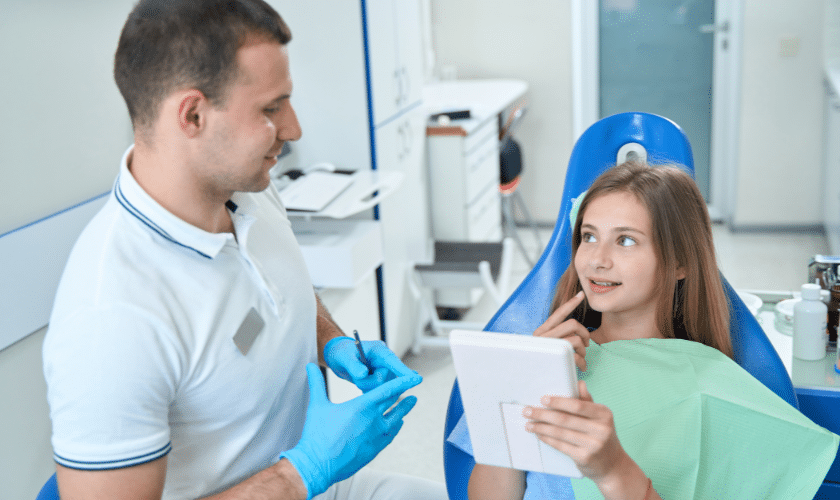ONLINE SCHEDULING AND VIRTUAL CONSULTS AVAILABLE

4 Aftercare Tips For Dental Sealants

Are you tired of dealing with cavities and tooth decay? Dental sealants may be the solution for you! These thin coatings are applied to your teeth to prevent bacteria from building up and causing damage. But once you have them, how do you take care of them? In this blog post, we’ll give you four aftercare tips for dental sealants to ensure your smile stays healthy and beautiful. Let’s dive right in!
1. Rinse Your Mouth And Teeth With Warm Water As Soon As You Finish Brushing And Flossing
After getting dental sealants, it’s important to maintain good oral hygiene habits. One of the most crucial things to do is rinse your mouth and teeth with warm water as soon as you finish brushing and flossing.
Warm water helps to loosen any remaining debris that has been dislodged by brushing or flossing. It also helps to soothe any soreness or inflammation in the gums caused by applying sealant material.
When rinsing, swish the water around your mouth for about 30 seconds before spitting it out. This will help remove any remaining food particles and leave your mouth feeling fresh and clean.
It’s important to note that rinsing with warm water should not be a substitute for regular brushing and flossing. Rather, it should be an additional step in your daily oral care routine.
By incorporating this simple habit into your dental care routine after getting dental sealant treatment, you can ensure better long-term protection against cavities and tooth decay.
2. Drink Plenty Of Fluids To Help Rid Your Mouth Of Bacteria
Drinking plenty of fluids is not only important for your overall health, but it can also help rid your mouth of harmful bacteria. Water is the best option as it helps to flush out food particles and debris that may be trapped in between teeth or under dental sealants.
Other options to consider include sugar-free drinks like herbal tea and coconut water. These beverages contain natural antimicrobial properties that can help kill off bad bacteria in the mouth. However, avoid sugary drinks such as soda or energy drinks, which can promote bacterial growth.
In addition to drinking fluids, chewing sugar-free gum after meals can stimulate saliva production. Saliva plays a crucial role in maintaining good oral hygiene by neutralizing acids produced by harmful bacteria and washing away food particles from the teeth’s surface.
Incorporating fruits and vegetables into your diet will provide nutrients critical for healthy teeth and gums while increasing salivary flow. Just remember to rinse with water after eating acidic foods such as citrus fruits to prevent damage to tooth enamel.
Staying hydrated through regular fluid intake is essential for achieving optimal oral health while aiding in ridding your mouth of unwanted bacteria.
3. Apply Sealant Even If You Don’t Have Any Pain Or Discomfort
Getting a dental sealant can be an excellent way to protect your teeth from cavities and decay. Even if you don’t have any pain or discomfort, it’s essential to apply sealant as soon as possible. Dental sealants are thin coatings that cover the surface of your molars and premolars, preventing bacteria from settling in the grooves and fissures.
One of the most significant advantages of dental sealants is that they’re entirely painless and non-invasive. The procedure involves painting a liquid resin over your teeth, which then hardens into a protective shield.
Applying dental sealants early on can prevent expensive treatments down the line. A small investment now could save you thousands in future bills for fillings, root canals, or other procedures.
While brushing and flossing remain critical components of maintaining good oral health, they aren’t always enough to prevent tooth decay entirely. Sealants act as an added layer of protection against harmful bacteria that cause cavities.
Remember: prevention is vital when it comes to oral hygiene! Applying dental sealant even if there’s no current issue can help keep your teeth healthy for years to come.
4. Brush Your Tongue And the Roof Of Your Mouth
Brushing your teeth is essential for good oral hygiene, but did you know that brushing your tongue and the roof of your mouth is just as important? Many people forget this step in their dental routine, but it can make a big difference in the health of your mouth.
Our tongues harbor bacteria that can contribute to bad breath and even tooth decay if left unchecked. Brushing our tongue removes food particles and bacteria buildup, which helps keep our breath fresh and our mouths healthy.
The roof of our mouth is another area where bacteria can accumulate, especially if we eat sticky or sugary foods. By gently brushing this area with a soft-bristled brush, we can remove any remaining food particles that could lead to plaque buildup or cavities.
Brushing these areas should be done gently to avoid causing discomfort or irritation. It’s recommended to use a small amount of toothpaste on a soft-bristled brush when cleaning the tongue and roof of the mouth. Remember to rinse thoroughly after brushing these areas.
Dental sealants are a great way to prevent tooth decay and maintain good oral hygiene. However, it is important to take care of your sealants properly to ensure their longevity. By following the above-mentioned tips, you can keep your teeth healthy and avoid any complications that may arise due to poor aftercare.
Remember, prevention is always better than cure! So, make sure you visit your dentist regularly and follow these simple steps to keep your smile bright and beautiful for years to come.




